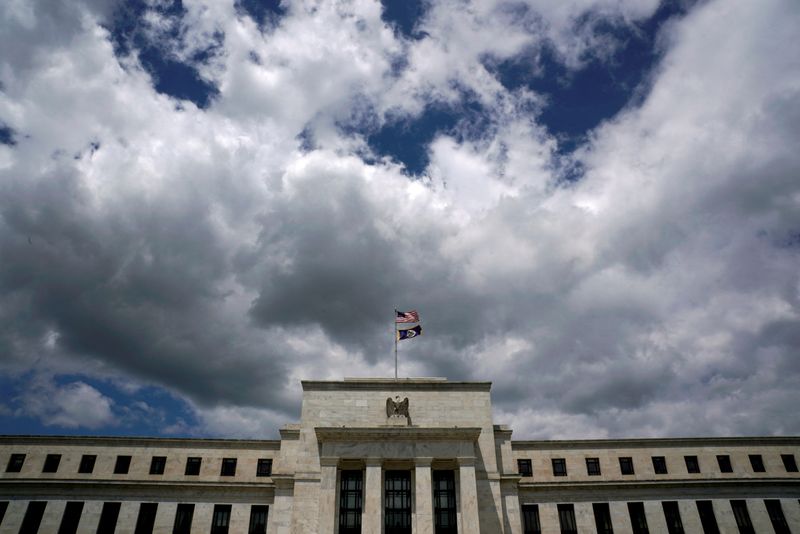By Naomi Rovnick and Dhara Ranasinghe
LONDON (Reuters) - The U.S. Federal Reserve has joined a global easing cycle with a larger-than-anticipated half-point interest rate reduction.
Seven of the 10 big developed-market central banks tracked by Reuters have now started easing policy. Japan is the outlier, as it starts to lift its rates from ultra-low levels.
Here's where major rate-setters stand and what traders expect next.
1/ SWITZERLAND
The Swiss National Bank, the first among Western peers to lower borrowing costs in March, cut rates again in June to 1.25%. It has signaled it intends to keep going.
Money markets view another cut on Sept. 26 as certain, and are pricing almost 30% odds of a 50 basis point (bps) reduction, after Swiss annual inflation dropped to 1.1% in August. Outgoing SNB chair Thomas Jordan believes a stronger franc threatens exports.
2/ CANADA
The Bank of Canada is expected to deliver a fourth consecutive cut in October. A 25 bps reduction is fully priced in and markets attach a roughly 60% chance of a bigger 50 bps cut.
Annual inflation has slowed to 2% and the BoC has mused about price rises dropping below this target level after the economy slackened and strong population growth helped lift unemployment to 6.6%.
3/ SWEDEN
Sweden's Riksbank, which started cutting rates in May after its successive hikes crushed inflation but weakened the economy, is tipped to lower borrowing costs by another 25 bps on Sept. 25.
Swedish rates stand at 3.5% but annual inflation has steadied at below the Riksbank's 2% target.
4/ EURO ZONE
The ECB cut rates again on Sept. 12 as the euro zone economy faltered and inflation slowed, providing scant clues on what it might do next.
Investors expect roughly 40 bps of further easing by year-end and see about a 30% chance of another 25 bps cut in October.
5/ BRITAIN
The Bank of England left its key rate unchanged at 5% on Thursday after cutting it in August from a 16-year high of 5.25%.
Britain's services inflation remains sticky, meaning the BoE is expected to lower rates far more slowly than in the United States or the euro zone.
Markets price in roughly 40 bps of rate cuts by year-end and see around a 65% chance of a quarter-point cut in November.
6/ UNITED STATES
The Federal Reserve on Wednesday kicked off an easing cycle with a big 50 bps rate cut, the first reduction in over four years.
Money markets now price in roughly 70 bps worth of further easing by year-end, suggesting traders think another big reduction is likely.
7/ NEW ZEALAND
A convention for quarterly instead of monthly GDP and inflation data has baffled New Zealand's central bank and domestic market watchers.
The Reserve Bank of New Zealand in August cut rates for the first time this cycle to 5.25%, a year earlier than its own projections had stated. Markets forecast another quarter point drop in October.
8/ NORWAY
Norway's central bank remains in the hawkish camp.
It left its policy rate unchanged at 4.50% on Thursday and said any cuts must wait until the first quarter of 2025, boosting the crown currency.
Markets price in a roughly 70% chance of a move in December, meaning Norway's easing cycle will likely start well after those of its peers.
9/ AUSTRALIA
Another in the hawkish camp is Australia.
The Reserve Bank of Australia has held rates at 4.35% since last November and believes inflation is still sticky, although data suggests the economy is struggling.
Markets do not expect any cuts until at least December.
10/ JAPAN

Rising inflation prompted longtime outlier the Bank of Japan to nudge borrowing costs up to 0.25% in July, a move that wreaked havoc on global trades that were underpinned by its ultra-loose monetary policies.
The yen has surged, Japanese stocks are flailing and the BoJ, now keen to protect domestic industry from further market ructions, is expected to hold rates steady on Friday and keep them below 0.5% until at least October 2025.